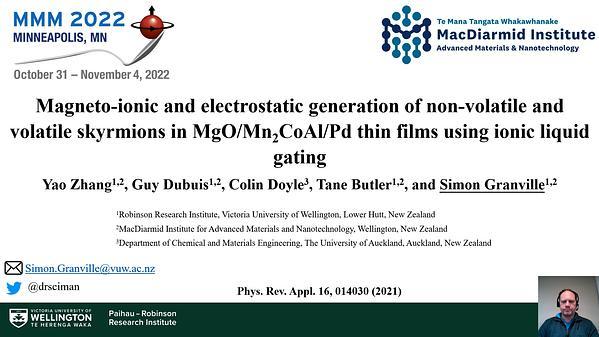
Premium content
Access to this content requires a subscription. You must be a premium user to view this content.

technical paper
Reconfigurable domain wall pinning in synthetic antiferromagnets
Magnetic domain wall (DW) motion has been received much attention owing to its potential for applications in next-generation computing devices, such as memory 1,
logic 2, and neuromorphic devices 3. In such devices, it is essential to manipulate the domain wall position in a controllable way. The extrinsic pinning sites such as ‘notch’ have
conventionally been used for the reliable positioning of DW. However, such extrinsic pinnings are not relevant in device applications because the extrinsic treatments cause the damage to
the sample. Furthermore, the pinning position is not reconfigurable because the extrinsic treatments change the properties of sample permanently.
In this study, we present a novel method to control the DW position in a damage-free and reconfigurable way. We utilize the inter-domain wall interaction in synthetic antiferromagnets
(SAF). The SAF is composed of two magnetic layers separated by non-magnetic spacer. In this system, domain wall at the bottom layer (‘bottom-DW’) feels the dipolar field from the DW
at the top layer (‘top-DW’). As the dipolar field produces the repulsive force to the DW, the bottom-DW can be effectively pinned by the top-DW. Therefore, the top-DW can act as an
effective pinning site for the bottom-DW motion. We demonstrated this idea experimentally that the bottom-DW can be pinned by top-DW for both the field- and current-driven DW
motion. Furthermore, we found that the position of pinning site can be freely changed by changing the position of top-DW. Our work demonstrates the damage-free and reconfigurable
pinning site for the DW motion, which could provide a novel functionality for DW-motion-based spintronics applications.
References
1 S. Parkin, et al. Science Vol. 320, 5873, p.190 (2008).
2 Z. Luo, et al. Nature Vol. 579, p.214 (2020).
3 T. Jin, et al. J. Phys. D: Appl. Phys. Vol. 52, 44, p.445001 (2019).

